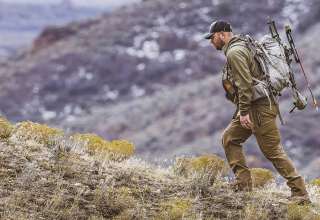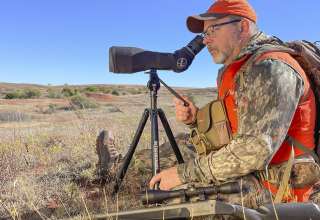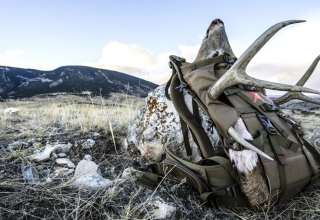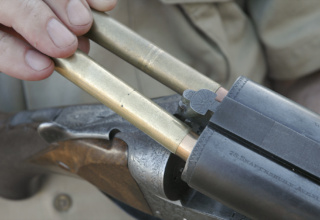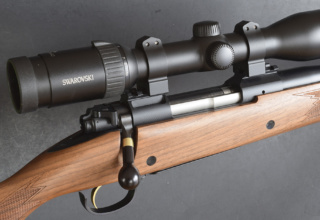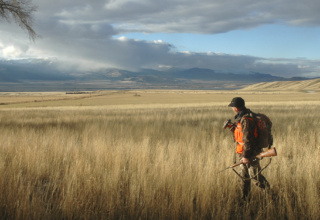Your guide needs help. Here’s how to become an ideal client – and why blessings will follow.
by Wayne van Zwoll
He’d run most of a box of cartridges through the .300 that, benched, printed thimble-size groups. “Well, I got him,” he said, handing me the 11-pound rifle for the hike to the bull. He had muffed an easy shot, then chipped away at the departing beast until it gave up.
I’m not a pro. Elk hunting is a part-time gig. But I was gifted with a decade of guiding where elk were plentiful. Less common, it turned out, were clients suited to the hunt.
My failings as both guide and hunter are legion, so far be it from me to indict. On the other hand, who better than the flawed to spot blemishes in others?
At the top of any guide’s wish list is a good companion. (Clients, by the way, are looking for the same chap, whether they think so or not.) An insufferable human being can sour any hunt. What’s good? Honesty, optimism, civility. These qualities, enduring through hardship and ill luck, make you a star.

Reasonable expectations help you bond with a guide. One client, on his arrival, strode up without extending his hand to meet mine. Instead, he pulled from his pocket a photo of a dead elk. His first words: “This bull scored 360. I want one bigger.” Of such congeniality come difficult days.
Much appreciated in elk country is physical capacity. You needn’t have scaled high peaks or run marathons. Guides don’t check your VO2 or Body Mass Index. But if you can’t or won’t walk to where elk live, you’ll see few of these animals. Blank days can affect your honesty, optimism, and civility.
If silence is golden, silence in the elk woods is Fort Knox. You and the elk will both make noise. Hearing the elk before they hear you is important. Rid yourself of coins, keys, loose cartridges, and dangling carabiners. Grease or wax sling swivels so they don’t squeak. Speak to your guide only when necessary, and always in a whisper. Step softly, avoiding loose rocks and twigs as if they were snakes. Don’t cough.

When you must use horses or mules, be candid about your experience. You ain’t a cowboy if you can’t cowboy. Wannabes come to grief with rough stock or in tight places. If you’re more comfortable on Dobbin than Diablo, say so. Offer to help saddle, picket, unpack, or otherwise tend stock, to the limits of your ability. Do what you’re told around horses, no matter what you remember from watching Gunsmoke.
Have a chat early on about shooting. If you’re a bowhunter, tell the guide how close you must be for a sure shot. A sure shot. Brush, angle, other variables may trim that yardage or nix a shot altogether. To help you kill, a guide must know your limitations. He doesn’t care you once skewered a beer can at 85 yards. The last thing he wants is to lose the blood trail of a poorly hit elk.

While shooting far with a rifle fails as a measure of testosterone, not everyone got that memo. Elk are tough beasts. Your task is to hit vitals with the first shot and sometimes follow fast with another. The closer you are, the less likely you are to cripple. I tried to get every hunter inside point-blank range — 250 yards for most loads — and advised against shooting if for any reason the poke looked risky.
Once, setting up a spotting scope to plan a sneak on a bull loafing 320 yards off, I was shaken by the blast of my client’s Weatherby. He couldn’t wait and had fired offhand. The blood trail petered out. For the remainder of his hunt we looked in vain for that big, beautiful six-point. It could have been ours.

In another camp, a client boasted on the eve of the opener that, with his magnum, he’d topple any buck within 500 yards. Next morning, he paunched a fine deer inside 200. We’d have lost it had not other hunters helped with a push. The proper response to “How far can you shoot?” is “As close as we can get.”
A powerful rifle won’t compensate for an errant bullet.
Where camp noise wouldn’t bother elk, I asked arriving hunters to check zero from a solid rest on a 100-yard target, then to fire a couple of shots from a position they might use afield. Few hunters could quickly assume a kneeling or sitting position. Few offhand shots landed well.
At a sight-in day on a shooting range, I once asked 40 hunters who had just zeroed their rifles to take one offhand shot apiece at a 6-inch bullseye. Only five scored a hit at 100 yards. The backing paper, 22 inches square, had 30 holes, so 10 hunters had missed that! Precious indeed are clients who routinely practice marksmanship from hunting positions!

A clear understanding of responsibilities helps both guide and hunter. The guide must know elk habit and the hunting area, work hard to bring his client a shot and accommodate, within reason, his or her wishes on the trail. The hunter must come physically ready and equipped to seek, then shoot an elk under unpredictable conditions. All responsibility for the results of a shot is the hunter’s! When my client was on the trigger, I gave advice. As a client, I’ve deferred to guides who counseled against firing, even when, in a couple of cases, I was certain of a close-range kill and almost as certain I’d have no other chance.

Communicate. As you get used to a guide’s hunting style and personal idiosyncrasies, and he gets used to yours, talk out differences before they become problems. Once, a guide insisted on “bugling up” a big bull moving away, though I urged him to let me sprint to intercept. The elk ignored the call. Released the next day to still-hunt alone, I killed a five-point. An earlier chat might well have netted bigger antlers!



